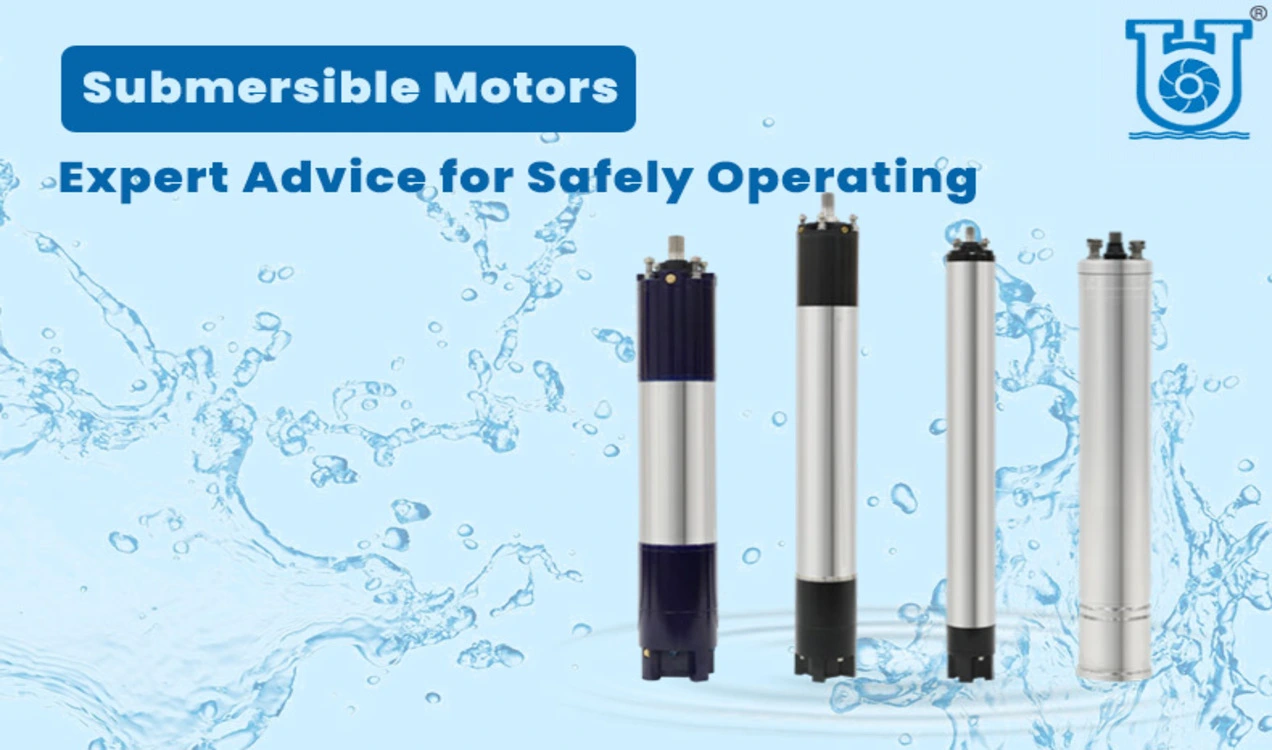Submersible motors are electric motors that are designed to operate underwater. They are used in various industries such as agriculture, mining, and construction to power pumps and other equipment. Submersible motors are an efficient and reliable solution for underwater operations, but it is important to follow safety guidelines for their long life.
Safely operating submersible motors is crucial as it can prevent accidents and damage to the equipment and also ensure the longevity and efficiency of the motor. Neglecting safety guidelines can lead to dangerous situations, causing harm to people and damage to property, as well as costly repairs or replacements.
Understanding the Risks:
Common concerns linked with submersible motors include electrical hazards, corrosion, and overloading. Electrical risks can develop owing to defective wiring or poor grounding, corrosion can occur due to exposure to water, and overloading can cause the engine to burn out or die. These dangers can be avoided by good maintenance, correct installation, and following safety requirements.
Potential dangers can be recognized by frequent inspections and testing of the submersible motors. To reduce the dangers, adequate maintenance of the motor should be done, including cleaning and lubricating, following the manufacturer’s recommendations, and ensuring the motor is correctly placed. Additionally, adequate training and certification for individuals operating the motors may assist in detecting and minimizing possible dangers.
Proper Maintenance:
Regular maintenance is vital for the safe and efficient running of submersible motors. It helps to prevent corrosion and damage caused by exposure to water and other environmental causes. Regular maintenance also ensures that the motor is running at its optimum, which may prolong its lifespan and assist in preventing costly repairs or replacements. It comprises cleaning, lubricating, and inspecting for wear and tear on the motor parts.
Tips for maintaining submersible motors:
- Clean the motor and the surrounding area regularly
- Lubricate the motor’s moving parts
- Check for wear and tear on the motor’s parts
- Inspect the wiring and connections for any signs of damage
- Follow the manufacturer’s instructions for maintenance and repair
- Keep the motor in a dry and well-ventilated area when not in use
- Schedule regular maintenance checks with a professional
Safety Measures:
When operating submersible motors, it’s vital to take safety precautions such as:
- Properly grounding the motor
- Wearing protective gear such as gloves and goggles
- Keeping the motor area clear of debris and other hazards
- Verifying that the motor is properly installed and connected
- Following the manufacturer’s instructions for operation
- Keeping a fire extinguisher nearby in case of emergencies
Guidelines for emergency situations:
- Turn off the power to the motor immediately
- Evacuate the area if necessary
- Call for professional help
- Do not attempt to repair the motor
- Avoid contact with water or electrical components
- Use a fire extinguisher to put out any flames if applicable
- Follow all safety procedures provided by the manufacturer and the local laws
Training and Certification:
Proper training and certification are required to operate submersible motors safely. They make ensure that the operators have the information and skills necessary to run and maintain the motors safely, as well as spot and avoid any hazards. Without adequate training and certification, operators may be uninformed of the dangers and how to avoid them, which can result in accidents and equipment damage.
Training and certification for operating submersible motors may be gained through organizations like OSHA, NCCER, and other professional bodies. These associations provide training and certification programs for individuals and enterprises that employ submersible motors. Additionally, submersible motor manufacturers offer training and certification. Specific limits should be confirmed with your employer or local regulatory authorities.
Choosing the Right Submersible Motor:
When selecting a submersible motor, issues such as the motor’s power and voltage demands, the kind of application it will be used for, the environment it will function in, and the motor’s compatibility with other equipment must all be addressed. It’s also vital to consider the motor’s energy efficiency and capabilities to endure big loads or harsh settings. Furthermore, the manufacturer’s warranty, maintenance requirements, and certifications should be taken into account.
Tips for selecting the best-suited motor for a certain application:
- Identify the power and voltage requirements of the application
- Consider the type of environment the motor will operate in
- Check the motor’s compatibility with other equipment
- Look for a motor with high energy efficiency
- Consider the manufacturer’s warranty and maintenance requirements
- Check for certifications and compliance with local regulations
- Get professional advice or consult with the manufacturer
Conclusion:
In conclusion, properly operating submersible motors entails knowing the dangers, regular maintenance, safety measures, training and certification, and choosing the correct motor for the intended application. Regular maintenance, adequate training, and following safety rules are crucial to guaranteeing the safety and lifespan of submersible motors. It is suggested to obtain expert assistance and follow the manufacturer’s instructions for safe operation.


